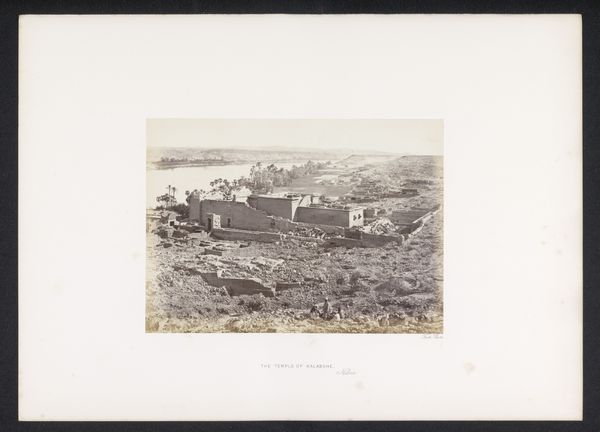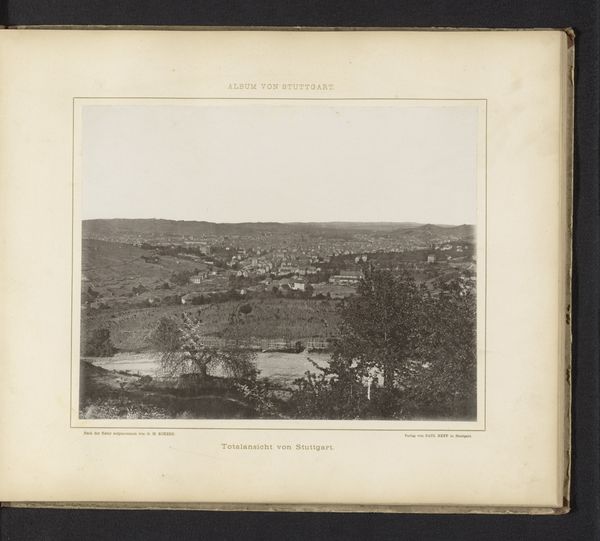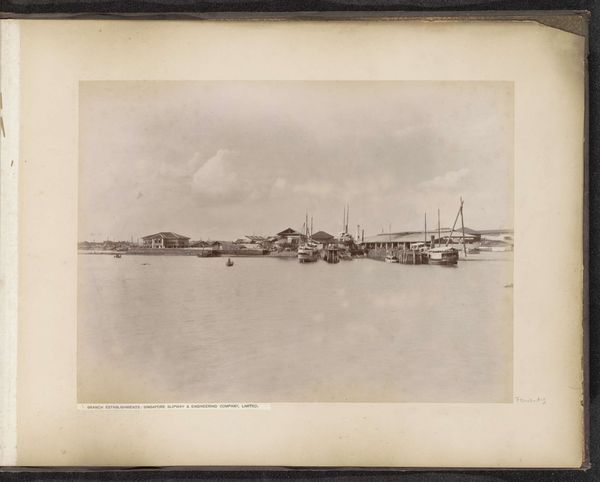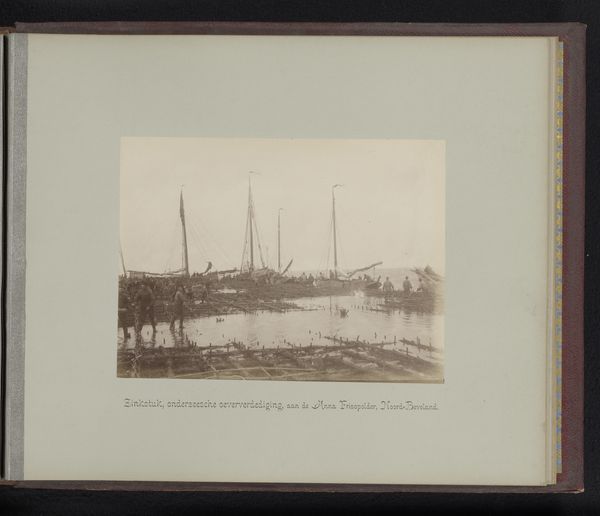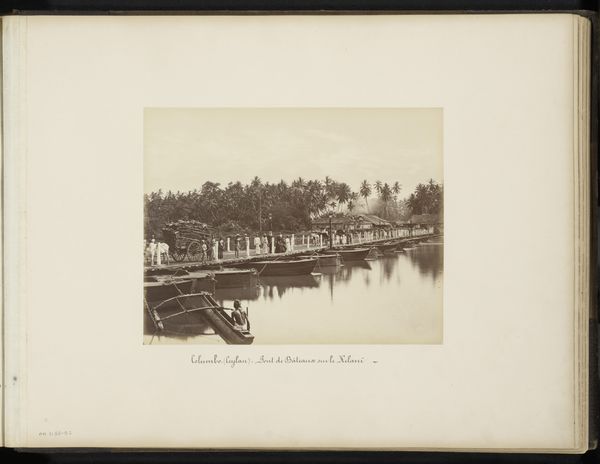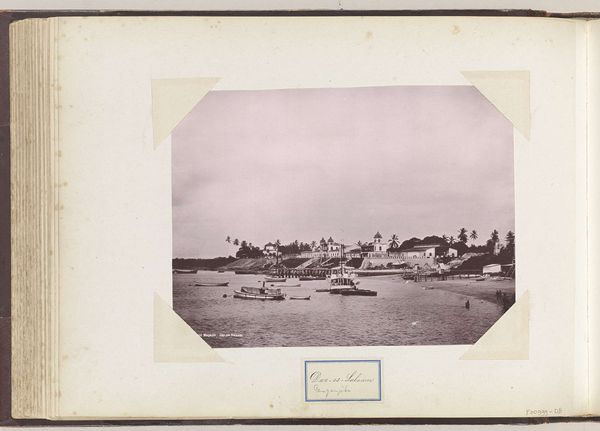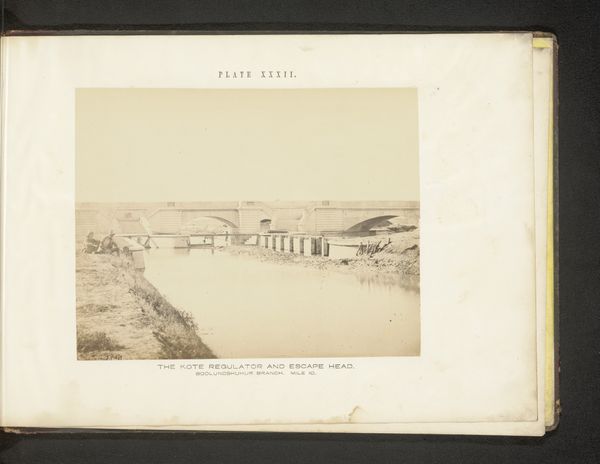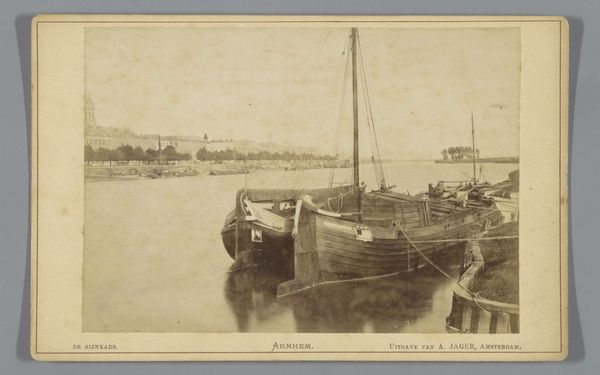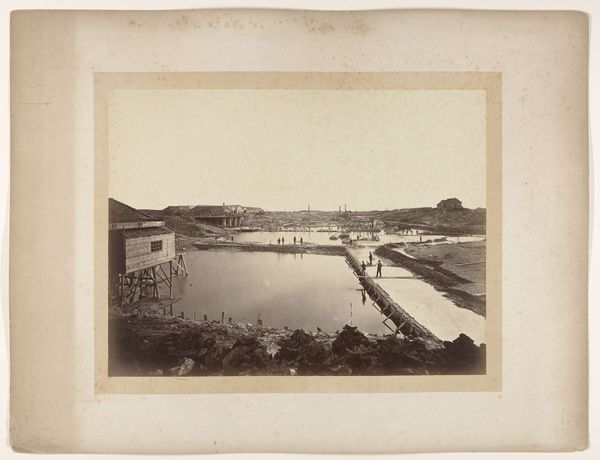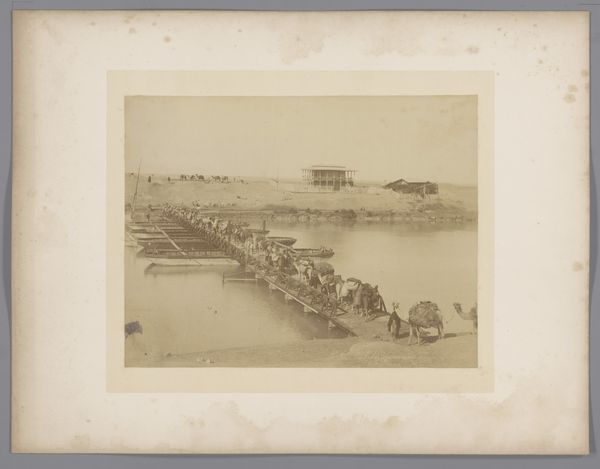
#
pencil drawn
#
boat
#
aged paper
#
toned paper
#
pencil sketch
#
charcoal drawing
#
tea stained
#
charcoal art
#
coffee painting
#
watercolour illustration
#
watercolor
#
building
Dimensions: 23.9 x 30 cm (9 7/16 x 11 13/16 in.)
Copyright: Public Domain
Emile Gsell made this albumen silver print, "Vue de la Ville Chinoise (Cholen) Feuille No. 4" to document the vernacular architecture and riverine life of Saigon. The albumen process was the dominant form of photographic printing in the 19th century. It involved coating paper with egg white to create a smooth surface for the silver-based photographic emulsion, and then contact-printed from a glass negative. This labor-intensive process yielded images of remarkable detail and tonal range. But consider the social context. Photography in this period was deeply implicated in colonial expansion. While Gsell’s photographs documented the built environment and everyday life, they also functioned as tools of imperial knowledge, shaping Western perceptions of Vietnamese culture and resources. This image, produced through a meticulous chemical and mechanical process, is also a product of asymmetrical power relations. Understanding the material and historical processes behind this photograph allows us to appreciate its technical skill, and also to critically examine its role in shaping colonial narratives.
Comments
No comments
Be the first to comment and join the conversation on the ultimate creative platform.
